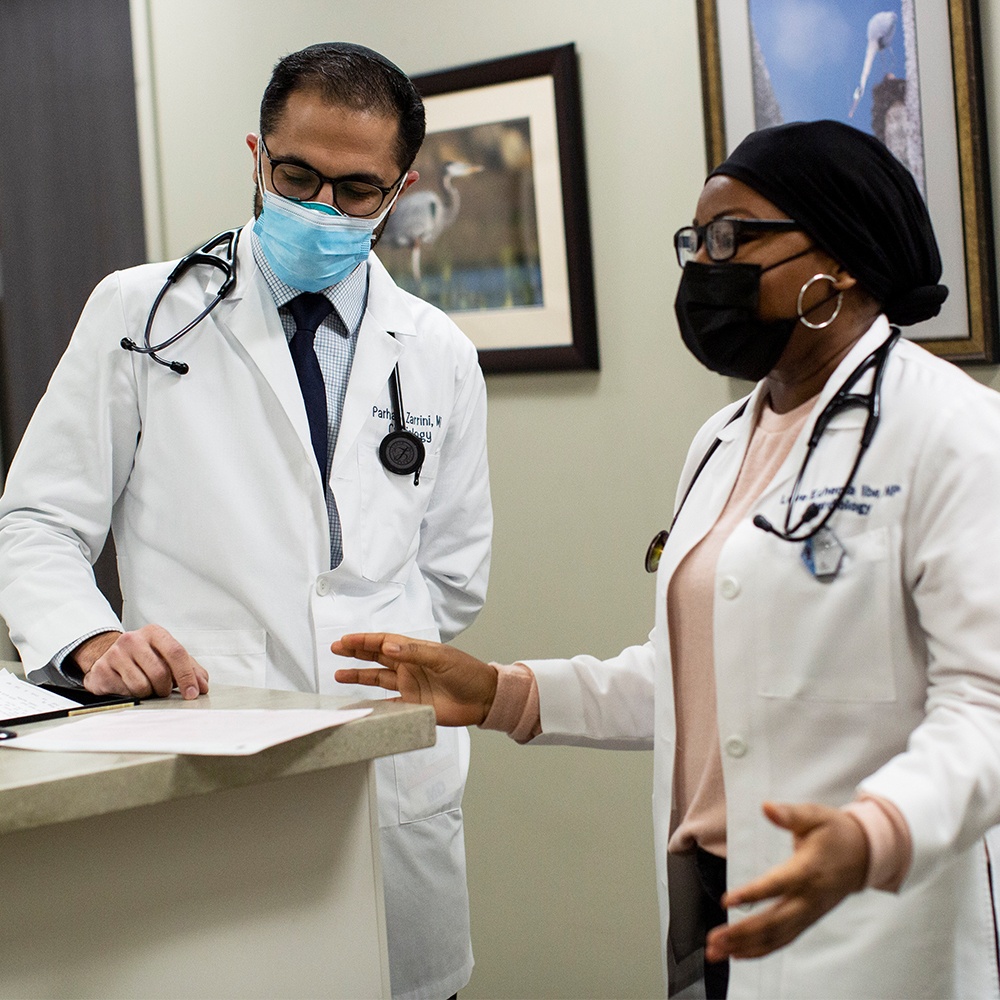Coronary Angioplasty

Overview
What is a Coronary Angioplasty?
Coronary angioplasty is an interventional procedure that your cardiologist uses to diagnose and treat blockage or narrowing in a coronary artery. Blockage or narrowing of the coronary arteries is called atherosclerosis, which is the build up of fatty deposits and plaque. Coronary angioplasty is typically done when you’re at risk of a heart attack or if you have aortic stenosis, chest pains or angina. During a coronary angioplasty, your cardiologist will inject a contrast dye into your arteries using a catheter. This will allow your doctor to see where the blockage or narrowing is using X-rays. A coronary artery stent may be placed in the narrowed or blocked arteries, to prevent the artery from becoming blocked again. A stent is a small, metal mesh tube that expands inside the coronary artery. Having angioplasty as soon as possible after a heart attack can lower the risk of heart failure, and other complications including death.
Why
Why Coronary Angioplasty?
Coronary angioplasty saves lives since it’s an efficient way to get blood flowing to the heart again quickly to prevent less damage to your heart muscles and lower the risk of another heart attack. This procedure relieves chest pain and shortness of breath as well as other symptoms of a heart attack. It’s important to note that angioplasty isn’t a cure for blocked arteries as the arteries can become blocked or narrowed again. That’s why it’s important to follow your cardiologist’s orders and have follow up appointments to monitor your health.

Risks
Coronary Angioplasty Potential Risks and Complications
As with any medical procedure, there are risks to a coronary angioplasty and you may have:
- Bleeding or clotting at the site of the insertion of the catheter.
- Scar tissue or blood clots that form in the stent.
- Arrhythmia, which is irregular heartbeat.
- Damage to your kidney.
- Infection.

Prep
Preparing for Coronary Angioplasty
Your cardiologist will give you instructions to help you prepare for the procedure based on your medical history, diagnosis and your current state of health. A coronary angioplasty is often performed as an emergency procedure.
What to Expect
What to Expect During a Coronary Angioplasty
During the Procedure
Most coronary angioplasty is performed in the catheter lab, where you’ll be given a mild sedative to help you relax.
- You will be awake during the procedure.
- Your doctor will clean and numb the site where the catheter will be inserted. This is usually in the groin or arm.
- You may feel a slight burning sensation when the dye that allows your doctor to see where the blockage or narrowing is located.
- A guide wire is the inserted into the blockage and the catheter is then gently advanced over the guide wire to your heart and the blockage. You may feel a dull pressure when this is done.
- Your cardiologist may do the following to open up your arteries:
- Balloon angioplasty is where your doctor inflates a balloon several times at the point of the blocked or narrowed artery to push the plaque against the artery walls and allow more blood to flow to your heart.
- A stent may be placed into your artery, which will be left in your artery to keep it open
- A catheter with a laser at the end may be used to break up the plaque.
Your Saint John’s Physician Partners cardiologist will discuss your treatment options, benefits and risks, and answer any questions you may have so you can make an informed decision.
After the Procedure
Be sure to drink lots of water to help flush out the dye that was injected. Your doctor will also recommend a heart healthy diet, exercise, stopping smoking if you do and how to reduce stress to reduce the likelihood of another blocked artery. You may also be prescribed medication to lower your cholesterol.
Follow-Up
Be sure to keep your follow-up appointments with your cardiologist and let him know if you experience any adverse symptoms.
Specialists